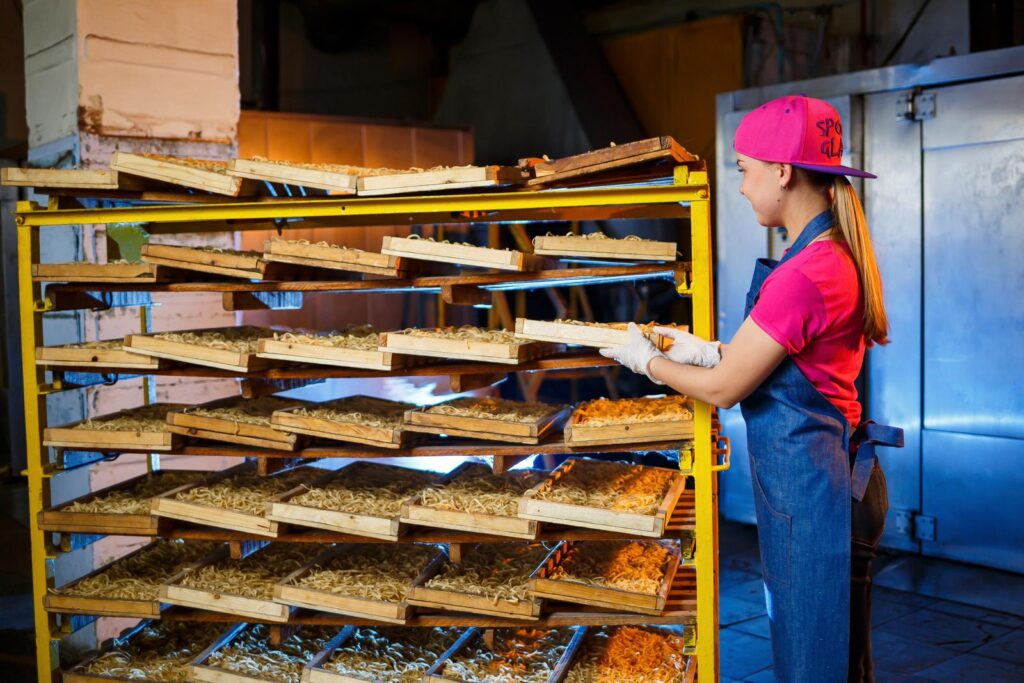
Data analytics in the food manufacturing industry reshapes how food products are produced, distributed, and marketed. Today, it provides manufacturers and distributors with previously inaccessible insights.
In this blog, we’ll explore how leveraging data is becoming crucial for success in today’s competitive food manufacturing industry.
The projected market size for AI and Big Data in the food industry is set to reach USD 269.92 billion by 2032. AI has been a part of the food and beverage sector for some time, and its adoption is expected to become even more widespread. Data analytics is crucial for manufacturers aiming to improve efficiency and maximize production while minimizing resource waste.
AI and predictive analytics are rapidly becoming the backbone of the industry, essential for optimizing every facet of the manufacturing process, from supply chain logistics to real-time quality control.
55% of food companies want to grow their packaging lines and production facilities, but some challenges hold them back. Let’s talk about five of the toughest ones:
The food industry is fast-paced in terms of changing consumer demands. Missing the mark can lead to excess inventory and lost revenue. Data analytics helps analyze consumer behavior and market trends, allowing manufacturers to adjust production and avoid costly missteps.
Tools like Brizo FoodMetrics help food manufacturers analyze 1.5M+ foodservice establishments, 2.5B+ menu items, and a tech stack of 500+ apps to understand the latest consumer trends.
Disruptions in the supply chain can cause significant delays and increase costs. Data analytics provides real-time insights, enabling foodservice manufacturers to identify potential bottlenecks, predict issues before they arise, and keep the supply chain running smoothly.
Recalls and safety breaches can tarnish a brand’s reputation and have severe financial repercussions. With data analytics, manufacturers can track products through every stage, quickly identifying and addressing potential safety issues.
Inefficient production processes waste time and resources. Data analytics helps identify inefficiencies in production lines, enabling manufacturers to streamline operations, reduce waste, and save on operational costs.
The one-size-fits-all approach no longer works in the diverse food market. Data analytics allows manufacturers to understand various consumer preferences, leading to the development of targeted products that meet specific market segments.
Foodservice analytics transforms the food manufacturing industry by enabling companies to understand market trends and consumer preferences with unprecedented precision.
Market intelligence platforms tap into extensive foodservice market coverage, providing detailed analyses of restaurants at the item level—from ingredients to pricing strategies.
For instance, by analyzing menu trends, Brizo software helps restaurant technology providers and food manufacturers identify new product opportunities and partnership potentials. They can spot trends in ingredient popularity or dietary preferences in a specific region, which can lead to the development of new food products that cater to emerging consumer needs.
Here are five contrasts illustrating the shift from pre-analytics to a data-driven approach:
Before: Manufacturers conducted time-consuming surveys and focus groups to gauge consumer preferences, often relying on outdated information.
After: Real-time data analytics provides current consumer trends, enabling immediate production and marketing strategy adjustments. With Brizo’s extensive food service market coverage, companies access real-time food analytics to identify current trends and adjust offerings promptly.
Before: Guesswork and manual inventory tracking led human workers to overstocking or stockouts, tying up capital and risking massive amounts of product waste.
After: Predictive analytics forecasts demand, optimizing stock levels, and reducing waste through precise inventory management.
Product Development:
Before: New products were developed based on limited feedback, resulting in a hit-or-miss success rate.
After: Analytics-driven insights into consumer preferences lead to targeted product development with a higher success potential. Brizo’s in-depth market data for food manufacturers informs about emerging preferences, allowing for quicker, data-driven product development.
Before: Supply disruptions were often unexpected and costly, with slow response times.
After: Data analytics provides early warning of supply chain disruptions, allowing for proactive management and continuity planning.
Before: Product quality issues were detected post-production without, leading to recalls and reputation damage.
After: Continuous monitoring with analytics tools and machine learning enable immediate detection and rectification of quality issues before products leave the factory.
Knowing about your customer preferences and what’s happening in the market is super important if you want to do well in the food and beverage manufacturing business. This is where Brizo comes in—it’s like having a super-smart helper that can tell you what you need to know when you need to know it.
We’re here to help you make sense of all the numbers and charts so you can get back to making great food.
Are you thinking about giving Brizo a try? Get in touch with us!